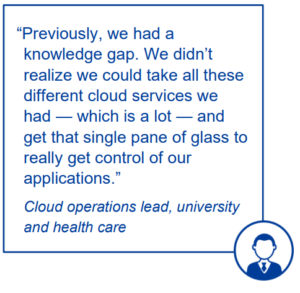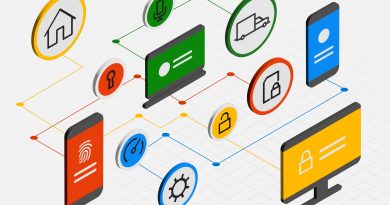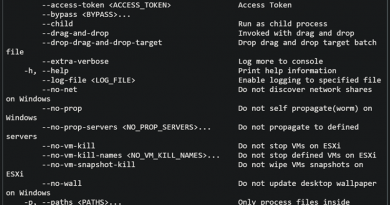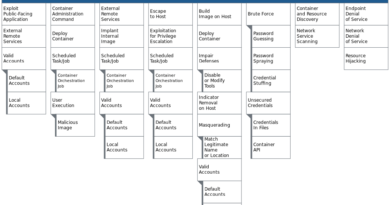New study shows customers save time, resources and improve security with Microsoft Cloud App Security
The global pandemic has forever changed our workplaces and reshaped our cybersecurity priorities. While in recent months cloud apps have helped people around the globe stay productive and connected. They also pose an increased cybersecurity risk to businesses large and small, especially when you don’t know which cloud apps your employees may be using. Now, as many countries and companies are entering a new phase toward hybrid work environments, we must apply digital empathy—the idea that cyber systems need to provide both strong security and a great user experience—to address this critical security and compliance priority.
Even before COVID-19, software-as-a-service (SaaS) was growing rapidly because the cloud makes it easy and cost-effective for people to find the tools they need. At the same time, businesses using conventional security suites to try to address vulnerabilities and protect their estates were finding limited success with low visibility into their data, user behavior and sensitive data moving to the cloud.
According to a May 2020 Forrester Consulting Total Economic Impact™ (TEI) Study commissioned by Microsoft, these limitations have led to the rise of shadow IT, difficulty recognizing and remediating security threats, and the need to rapidly adapt to new compliance requirements for the cloud. The study interviewed four existing customers in four industries, including manufacturing, medical devices, education, and health care. It also provided a closer look at the potential financial impact of using Microsoft’s Cloud App Security solution to gain visibility of an organization’s native and third-party applications. That included easier monitoring of security and risks associated with cloud applications and sensitive data, improving detection and remediation of incidents, and improving compliance.
The Forrester study shows a three-year 151% ROI and less than 3-month payback on Cloud App Security investment
To better understand the benefits, costs and risks associated with a Microsoft Cloud App Security investment, Forrester interviewed four organizations with years of experience using Cloud App Security. It also developed a financial analysis of a composite organization to create a financial model framework. The results show organizations can save time and resources with a three-year ROI of 151% and payback of less than 3 months by more easily discovering potential security and compliance risks, automating threat protection and providing more time for people to focus their attention on higher priorities.
Key findings include:
- 80% reduction in time to monitor, assess and govern cloud application portfolio risks.
- 75% elimination of threats automatically due to increased visibility and automated threat protection.
- 40% reduction in the likelihood of a data breach with the potential savings of more than $1.6 million over three years.
- 90% reduction in the hours required to audit cloud apps.
When customers deploy Cloud App Security in their environment(s), they are frequently surprised at how many apps it uncovers. For almost any use case, employees can often quickly begin using an app without support from IT. This can result in hundreds or even thousands of unmanaged apps—what we refer to as Shadow IT. Although employees mean well, they don’t always understand the security and compliance risks associated with sharing and storing data in cloud apps. One of the organizations interviewed used MCAS to discover 9,000 apps being used by employees—1,600 of which did not meet the company’s security standards and were immediately shut down.

Another customer in the study noted the compliance benefits were critical as the health care organization moved sensitive information off-premises to the cloud. “We’ve been somewhat slow to move to the cloud because of protected health information and Health Insurance Portability and Accountability Act (HIPAA) regulations,” said the CIO interviewed. In researching cloud application security brokers, this leader realized the ability to get good governance, compliance and audit support was key as the organization moved to the cloud.
From using AI to crunch massive data sets, to analyzing threats in a fraction of a second, given the global scale of the pandemic, integrated security and diversity of data are two key advantages organizations reap as a result of leveraging the cloud. These are also two advantages among the five significant longer-term cybersecurity paradigm shifts, including digital empathy, zero trust, and cyber resilience strategies, that we anticipate as a result of organizations needing to respond quickly to the challenges of the pandemic.
Our Microsoft Cloud App Security Journey
At Microsoft, we’ve been on a journey with our customers gathering feedback and enhancing Microsoft Cloud App Security to meet their needs. The software has matured significantly, with new capabilities released every two weeks such as integrations with our 1st party security and compliance products as well as many 3rd party vendors that continue to represent a large portion of the market. These product improvements have led to the benefits and value described in this independent study with MCAS customers, and these benefits also ring true for Microsoft’s own Security Operations Center.
In an organization as large as ours with 156,000 worldwide employees, 160+ physical data centers in 60 countries and countless endpoints to monitor, it’s a significant task to track all the cloud services that our employees use. When the company team first deployed Cloud App Security in 2017, it created visibility they didn’t have before across all the non-Microsoft apps used. Once discovered, the team leveraged more than 80 risk factors built into Cloud App Security to evaluate them for compliance with corporate policies. If an app doesn’t meet the company standards, the team can block it from the network. Conversely, the team also uses Cloud App Security to sanction approved apps and if an app is really popular, onboard it onto Azure Active Directory (Azure AD) for single sign-on (SSO), further improving security for employees. Being able to weed out vulnerable apps and apply Azure AD security controls to non-Microsoft apps gives a lot more control over the app portfolio.
The Microsoft SOC receives tens of thousands of security signals a day. With integrated user and entity behavioral analytics (UEBA) and machine learning (ML) algorithms in MCAS our team can weed out false positives, detect behavioral anomalies across all our cloud apps and better respond to threats. This helps us uncover ransomware, compromised users, or rogue applications. This past June we released new documentation to help customers get familiar with our UEBA alerts.
Microsoft’s SOC team echoed the report’s findings on the usefulness of Cloud App Security in investigation and remediation. Allowing SOC analysts to see the data that is truly necessary helps them to ask the right kinds of questions, pivot with agility in pursuit of data that sparks curiosity and leads to better response patterns.
They also pointed out that Cloud App Security’s ability to assist in further refining the detections that already exist, emailing or texting analysts in custom policy designs and leveraging the powerful API integrations, including SIEM integrations, all led to better response and deeper, more correlated incidents across multiple data sets. The ability to customize queries remove alerts on “normal behavior” allows teams to zero in on abnormalities and even create a detection rule.
The remediation tools natively available in Cloud App Security which allow immediate revoking of user tokens (therefore prompting an immediate request to re-sign in) drastically simplifies the time to respond and the ability to increase agility when answering an attack. One of the most challenging things in this environment is how much the speed of attack has increased in recent years. With Cloud App Security, the team is better postured to identify a compromised user account, enforce revocation of user tokens to mitigate the threat, as well as analyze the touchpoints along the way that provides a deeper understanding of the “BDA” or – before, during, and after – phases of the attack. These findings can ultimately lead to stronger preventative (and detective) controls that address the root cause of the attack.
In a post-pandemic world where our cybersecurity priorities have forever shifted, all companies big and small must think differently about how to keep their data and people safe. By applying digital empathy to their approach, trusting nothing and no one in their Zero Trust journey, and leveraging the power of the cloud and threat intelligence from their tools and people, we all will be stronger and safer no matter what global event, security risks or cyberattacks come next.
Learn more
Read Forrester’s Total Economic Impact ™ of Microsoft Cloud App Security for details on how Cloud App Security can save time and money.
Find out how Cloud App Security can help you manage and secure your cloud environment.
Bookmark the Security blog to keep up with our expert coverage on security matters. Also, follow us at @MSFTSecurity for the latest news and updates on cybersecurity.
READ MORE HERE



